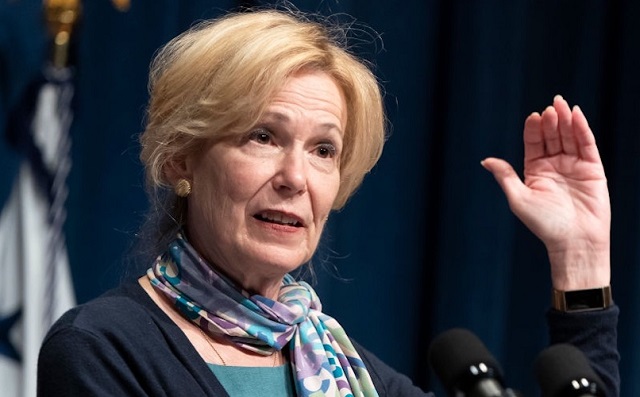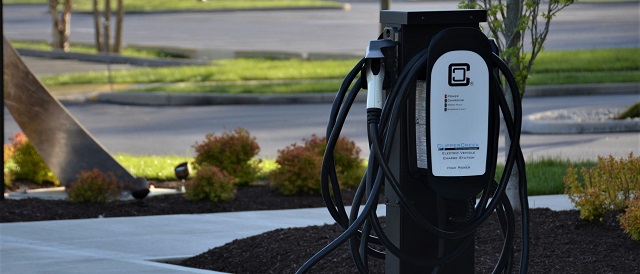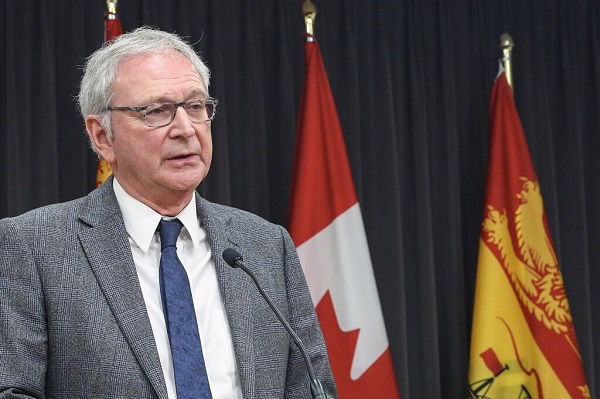Community
Turning the Tide on Cyberbullying: How Social Media Can Be a Protective Force

14 year old Adriana Kuch from New Jersey took her life because of bullying.
This article submitted by Cheryl Lynn Mark of DownloadAstro
In a digital age where the lines between reality and the virtual world blur, cyberbullying has emerged as a dark cloud on the horizon. But what if, instead of being a part of the problem, social media platforms could be channeled as a part of the solution?
This article will delve into the potential of social media as a protective force against cyberbullying. Here’s a roadmap of the discussion.
The rise of cyberbullying: current standing
Despite numerous expert-backed articles and the efforts of concerned organizations, cyberbullying remains a pervasive issue.
Earlier this year, we learned that 14-year-old Adriana Kuch from New Jersey took her life because of bullying. Apparently, another girl assaulted her at school, and the video of the said incident was posted on TikTok.
Before she did the unthinkable, Adriana said to her father, “I don’t want to be that girl who gets beat up on video and made fun of.” It was a sad thing for such a young girl to end up that way. And we hope that no one else will ever be in that situation again. Her story serves as a harrowing reminder of the devastating impact of cyberbullying.
The sad reality is that cyberbullying is difficult to fight as it comes in many different shapes and forms and is prevalent on all the major social media platforms.
But the truth is that social media is just a tool… Sometimes it’s not just about apps/websites — it’s the bad people on them.
This is why today, we’re going to dig deeper into how to use social media to our advantage. For parents, it’s essential to guide their children through navigating the platform. Time is always changing, and so is how we protect our children from harm like cyberbullying.
Social Media Tools for Protection
In the dynamic realm of social media, user safety is paramount. As cyberbullying continues to pose challenges, platforms are arming users with tools designed to enhance their online protection.
Consider the following essential features:
Privacy Settings: Controlling who sees posts and personal information
Privacy settings act as the first line of defense against unwanted intrusions. Most platforms allow users to decide who can view their content, be it the public, friends, or specific groups.
By limiting the visibility of posts and personal details, users can minimize exposure to potential threats. Regularly reviewing and updating privacy settings ensures that one’s online profile remains secure from prying eyes. It’s also advisable to restrict location sharing to prevent unsolicited real-world confrontations.
Reporting and Blocking: Quick actions against bullies
When faced with online harassment, a swift response can deter the perpetrators. Social media platforms have streamlined their reporting processes, making it easier for users to flag inappropriate content or behavior.
The blocking feature serves as an immediate barrier, ensuring that the bully can no longer contact or view the victim’s profile. This empowers the victim to reclaim their digital space without fear of further victimization.
Safety Centers: Resources offered by platforms for users in distress
Recognizing the profound impact of cyberbullying, many platforms have established safety centers. These are dedicated hubs containing articles, tutorials, and resources about online safety.
These centers often collaborate with mental health professionals and NGOs to provide guidance, helplines, and support for those affected by cyberbullying. They serve as a testament to the platform’s commitment to fostering a safer and more inclusive online environment.
While cyberbullying remains a concerning issue, armed with the right tools and knowledge, users can better protect themselves. Regularly updating oneself with the latest safety features and practices is essential to navigating social media’s vast and often tumultuous waters.
Positive Online Communities
If you’re not joining any communities right now, you’re missing out. Positive online communities stand out as beacons of hope. These communities are a testament to the fact that the internet, when harnessed correctly, can be a space for unity, support, and upliftment.
Here are some of the best benefits of joining a positive and uplifting community:
1. Emotional Support
Being part of a positive community provides a safety net, offering members a place to share their feelings, challenges, and experiences, knowing they’ll be met with understanding and empathy.
2. Personal Growth and Learning
Uplifting communities often foster an environment of continuous learning, where members share resources, advice, and experiences, contributing to personal development and growth.
3. Networking Opportunities
Beyond emotional support, these communities provide opportunities to connect with like-minded individuals, potentially leading to collaborations, partnerships, or new friendships.
4. Increased Positivity and Well-being
Regular interaction within a positive community can boost one’s mood, decrease feelings of loneliness, and contribute to overall mental well-being.
5. Resilience During Difficult Times
During challenging phases of life, having a supportive community can provide the strength and resilience needed to navigate and overcome adversity.
6. Shared Resources and Opportunities
Uplifting communities often pool together resources, information, or opportunities that can be beneficial for members, be it in the form of job leads, workshops, or educational content.
7. Sense of Belonging
Perhaps one of the most profound benefits is the innate human desire for connection and belonging. Being part of a positive community fulfills this need, reminding members that they are part of something bigger than themselves.
To find a positive and uplifting community, start by researching forums, groups, or platforms related to one’s interests or needs, paying attention to reviews or feedback from current members. Attend virtual or in-person events to get a feel for the community’s vibe.
For guiding children, emphasize the importance of online safety, encourage them to share their online experiences, and advise them to seek out communities that promote kindness, mutual respect, and constructive communication, steering clear of negative or toxic spaces.
The Influencer Effect
In the age of social media, influencers hold considerable sway over their vast audiences, making them invaluable allies in the fight against cyberbullying. Influencers have taken up the mantle of being digital role models. Many leverage their platforms to advocate for kindness, inclusion, and mutual respect in the online realm. To have a positive online environment, populate your social media platforms with influencers promoting such acts.
Remember to follow positive people in your life to strengthen your mind when fighting off negative forces.
Parental involvement in navigating the digital realm
Navigating the digital realm can be a daunting task for children, making parental involvement and guidance essential to ensuring a safe and wholesome online experience.
Open dialogue between parents and children about their online experiences is fundamental. Such conversations allow children to share their online triumphs and challenges and feel supported.
Regular discussions educate kids about potential online hazards, from cyberbullying to privacy concerns. When children know they can turn to their parents without fear of judgment or punishment, they are more likely to seek advice during troubling times.
Simple strategies for parents to stay involved:
1. Set Boundaries
Establish designated tech-free times, such as during meals, encouraging face-to-face communication and ensuring devices don't overshadow real-world interactions.
2. Co-View and Co-Play
Occasionally, join your child in their favorite online game or watch their beloved YouTube channel together. This shared experience provides insights into their online world.
3. Educate Through Discussion
Instead of merely setting rules, explain the reasons behind them, fostering understanding and cooperation.
4. Tech in Common Areas
Keep computers and other devices in shared spaces, like the living room, to casually oversee your child’s online activities.
5. Stay Updated
Familiarize yourself with the latest social media platforms, games, and online trends popular among kids. This knowledge aids in understanding their digital experiences better.
By actively participating and showing genuine interest in their child’s online life, parents can build trust, promote safety, and foster responsible digital habits.
Suggested read: What is the Most Likely Way Your Child can be Bullied Online?
The Bottom Line
As the fabric of our digital interactions evolves, social media’s role shifts from being merely a platform for connection to a force that can either uplift or harm. While challenges like cyberbullying persist, the collective effort of users, platforms, influencers, and parents can transform these virtual spaces into nurturing environments.
The onus isn’t just on the individual or the platform, but on the entire online community. Just recently, Georgia’s Republican leadership identified combating cyberbullying as a primary legislative focus. Lt. Gov. Burt Jones, who’s going to collaborate with educational institutions and social media firms to formulate the bill, said, “That’s not going to be limited to school districts, it’s going to have teeth in it where the people perpetrating these things, we’re going to try to hold them accountable.”
By promoting empathy, understanding, and proactive protection, we all can play a part in ensuring that the internet remains a space of positivity, growth, and safety for everyone, especially our younger generation.
Community
Last Day: What would you do with $20,000 Early Bird Prize?

|
|
|
|
|
|
Addictions
‘Harm Reduction’ is killing B.C.’s addicts. There’s got to be a better way

From the Frontier Centre for Public Policy
B.C. recently decriminalized the possession of small amounts of illicit drugs. The resulting explosion of addicts using drugs in public spaces, including parks and playgrounds, recently led the province’s NDP government to attempt to backtrack on this policy
Fuelled by the deadly manufactured opioid fentanyl, Canada’s national drug overdose rate stood at 19.3 people per 100,000 in 2022, a shockingly high number when compared to the European Union’s rate of just 1.8. But national statistics hide considerable geographic variation. British Columbia and Alberta together account for only a quarter of Canada’s population yet nearly half of all opioid deaths. B.C.’s 2022 death rate of 45.2/100,000 is more than double the national average, with Alberta close behind at 33.3/100,00.
In response to the drug crisis, Canada’s two western-most provinces have taken markedly divergent approaches, and in doing so have created a natural experiment with national implications.
B.C. has emphasized harm reduction, which seeks to eliminate the damaging effects of illicit drugs without actually removing them from the equation. The strategy focuses on creating access to clean drugs and includes such measures as “safe” injection sites, needle exchange programs, crack-pipe giveaways and even drug-dispensing vending machines. The approach goes so far as to distribute drugs like heroin and cocaine free of charge in the hope addicts will no longer be tempted by potentially tainted street drugs and may eventually seek help.
But safe-supply policies create many unexpected consequences. A National Post investigation found, for example, that government-supplied hydromorphone pills handed out to addicts in Vancouver are often re-sold on the street to other addicts. The sellers then use the money to purchase a street drug that provides a better high — namely, fentanyl.
Doubling down on safe supply, B.C. recently decriminalized the possession of small amounts of illicit drugs. The resulting explosion of addicts using drugs in public spaces, including parks and playgrounds, recently led the province’s NDP government to attempt to backtrack on this policy — though for now that effort has been stymied by the courts.
According to Vancouver city councillor Brian Montague, “The stats tell us that harm reduction isn’t working.” In an interview, he calls decriminalization “a disaster” and proposes a policy shift that recognizes the connection between mental illness and addiction. The province, he says, needs “massive numbers of beds in treatment facilities that deal with both addictions and long-term mental health problems (plus) access to free counselling and housing.”
In fact, Montague’s wish is coming true — one province east, in Alberta. Since the United Conservative Party was elected in 2019, Alberta has been transforming its drug addiction policy away from harm reduction and towards publicly-funded treatment and recovery efforts.
Instead of offering safe-injection sites and free drugs, Alberta is building a network of 10 therapeutic communities across the province where patients can stay for up to a year, receiving therapy and medical treatment and developing skills that will enable them to build a life outside the drug culture. All for free. The province’s first two new recovery centres opened last year in Lethbridge and Red Deer. There are currently over 29,000 addiction treatment spaces in the province.
This treatment-based strategy is in large part the work of Marshall Smith, current chief of staff to Alberta’s premier and a former addict himself, whose life story is a testament to the importance of treatment and recovery.
The sharply contrasting policies of B.C. and Alberta allow a comparison of what works and what doesn’t. A first, tentative report card on this natural experiment was produced last year in a study from Stanford University’s network on addiction policy (SNAP). Noting “a lack of policy innovation in B.C.,” where harm reduction has become the dominant policy approach, the report argues that in fact “Alberta is currently experiencing a reduction in key addiction-related harms.” But it concludes that “Canada overall, and B.C. in particular, is not yet showing the progress that the public and those impacted by drug addiction deserve.”
The report is admittedly an early analysis of these two contrasting approaches. Most of Alberta’s recovery homes are still under construction, and B.C.’s decriminalization policy is only a year old. And since the report was published, opioid death rates have inched higher in both provinces.
Still, the early returns do seem to favour Alberta’s approach. That should be regarded as good news. Society certainly has an obligation to try to help drug users. But that duty must involve more than offering addicts free drugs. Addicted people need treatment so they can kick their potentially deadly habit and go on to live healthy, meaningful lives. Dignity comes from a life of purpose and self-control, not a government-funded fix.
Susan Martinuk is a senior fellow at the Frontier Centre for Public Policy and author of the 2021 book Patients at Risk: Exposing Canada’s Health Care Crisis. A longer version of this article recently appeared at C2CJournal.ca.
-

 Brownstone Institute2 days ago
Brownstone Institute2 days agoMedical Elites’ Disgrace Over Ivermectin
-

 conflict1 day ago
conflict1 day ago‘It Makes No Sense’: Experts Puzzled By Biden Admin’s Claim That Rafah Invasion Wouldn’t Help Israel Defeat Hamas
-

 COVID-191 day ago
COVID-191 day agoThe New York Times Admits Injuries from COVID-19 Shots
-

 Bruce Dowbiggin1 day ago
Bruce Dowbiggin1 day agoWhy Do The Same Few Always Get The Best Sports Scoops?
-

 Opinion2 days ago
Opinion2 days agoThe American Experiment Has Gone Down In Flames
-

 Energy1 day ago
Energy1 day agoFederal government continues to reject golden opportunities to export LNG
-

 Energy1 day ago
Energy1 day agoBuckle Up for Summer Blackouts: Wind Is Already Failing Texas in Spring
-

 COVID-191 day ago
COVID-191 day agoFormer COVID coordinator Deborah Birx now admits jabs could have injured ‘thousands’










